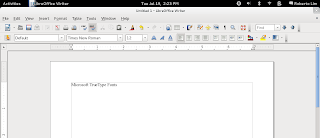If you are thinking of buying a smartphone this month, it might be a good time to wait. If you are decided on getting an Android phone, you safely buy the Samsung i9100 Galaxy S II without worrying that something better is just around the corner. It is by far the best Android phone available in the market today.
The Galaxy S II's 4.3-inch Super AMOLED screen is the best screen on a smartphone today. The Galaxy S II's thin 8.5 mm makes the massive screen much more manageable than previous large screen Androids. It has the fastest processor and graphics combination in any smartphone today. With 1GB of RAM and 16 or 32 GB of internal storage, it does not fall short in the department either. It's Php29,900 suggested retail price is lower than we expected, and a little comparative shopping and you will be able to snag it for just Php27,800.
The other top end Android are interesting, but outclassed. My own personal favorite is the HTC Sensation. If I was in the market right now this is what I would buy, but at Php27,000 with less RAM, a scant 1GB or internal storage and less processing power and slower graphcis, the Galaxy S II is by far a better deal. Why would I buy it. I like HTC's Sense user interface, and I would like my next phone to be similar to my last phone.
Gamers may want to look at LG's Optimus 2x. While it is no Galaxy S II beater, These days, it can be had for as low as Php24,990 which is a fair amount less. Also it's Tegra 2 chipset is the most common dual core Android platform in use there days, and Nvidia is supporting the gaming community, so it might provide better gaming compatibility.
If you want an iPhone instead this may be a good time to wait. A new iPhone is expected next month or two. Which means you can get the current iPhone 4 for a much lower price by than or get Apple's latest offering. The new A5 chip we expect on the next iPhone will make is substantially faster than the current iPhone 4. Rumor is, it will be getting a larger screen too. The 3.5-inch screen on the iPhone is really starting to feel small in 2011.
Nokia and BlackBerry. Nokia fans are better off looking at Windows Phone 7, that is where the company is heading. BlackBerry users are better off waiting for QNX to come to their phones or buying a BlackBerry Playbook and extend the capabilities of their existing phones.
Windows Phone 7 buyers, may want to wait a bit too. We understand that HTC, LG and Samsung are about to launch a series of Windows Phone 7 Mango phones to head off the iPhone launch. And really, there is no Windows Phone 7 device these days that we would consider to be "high end".
The good thing is this time last year, we would have been looking at 33K to 40K to get the best of the best. The 25K to 28K option we are looking at right now are friendlier to the wallet.















































